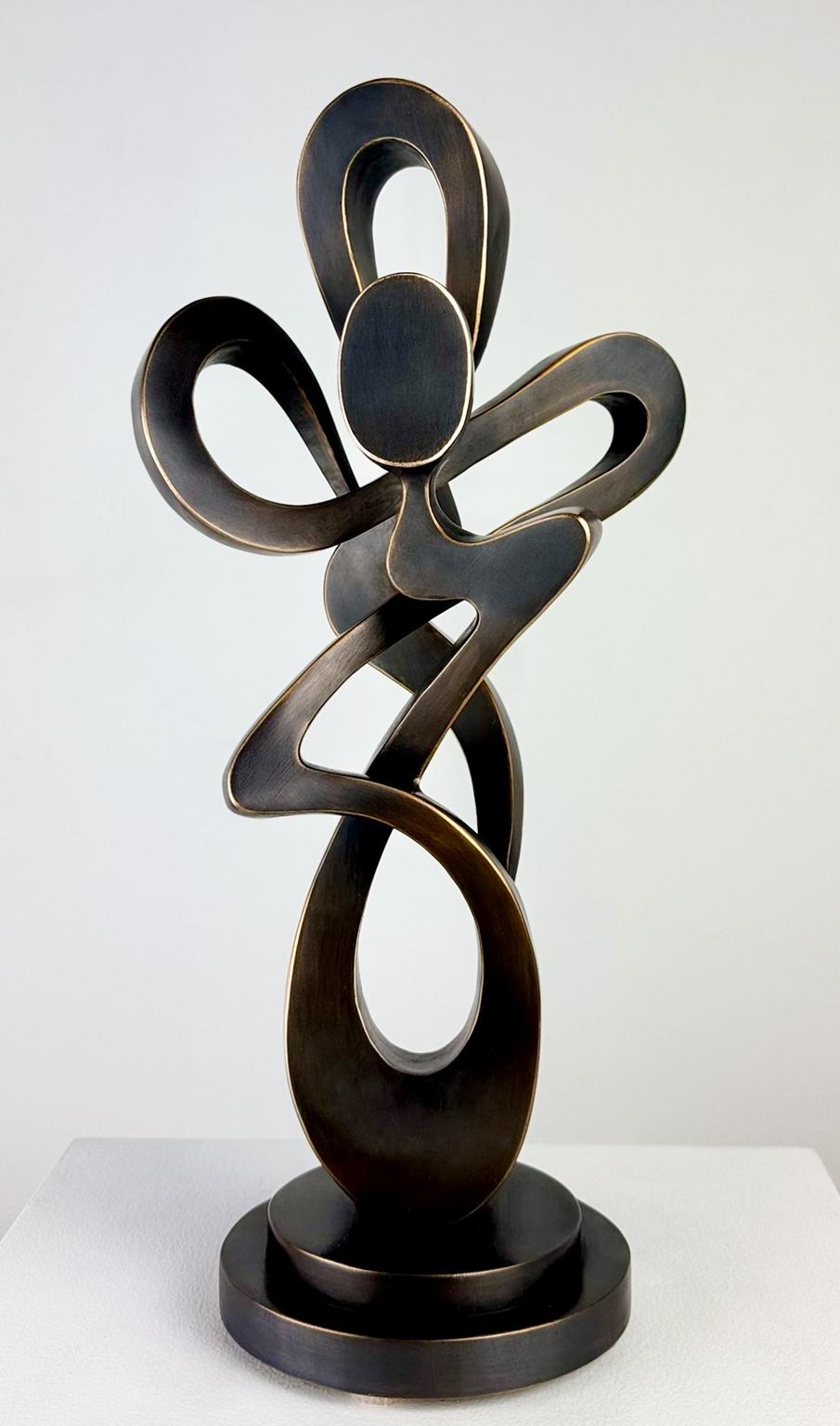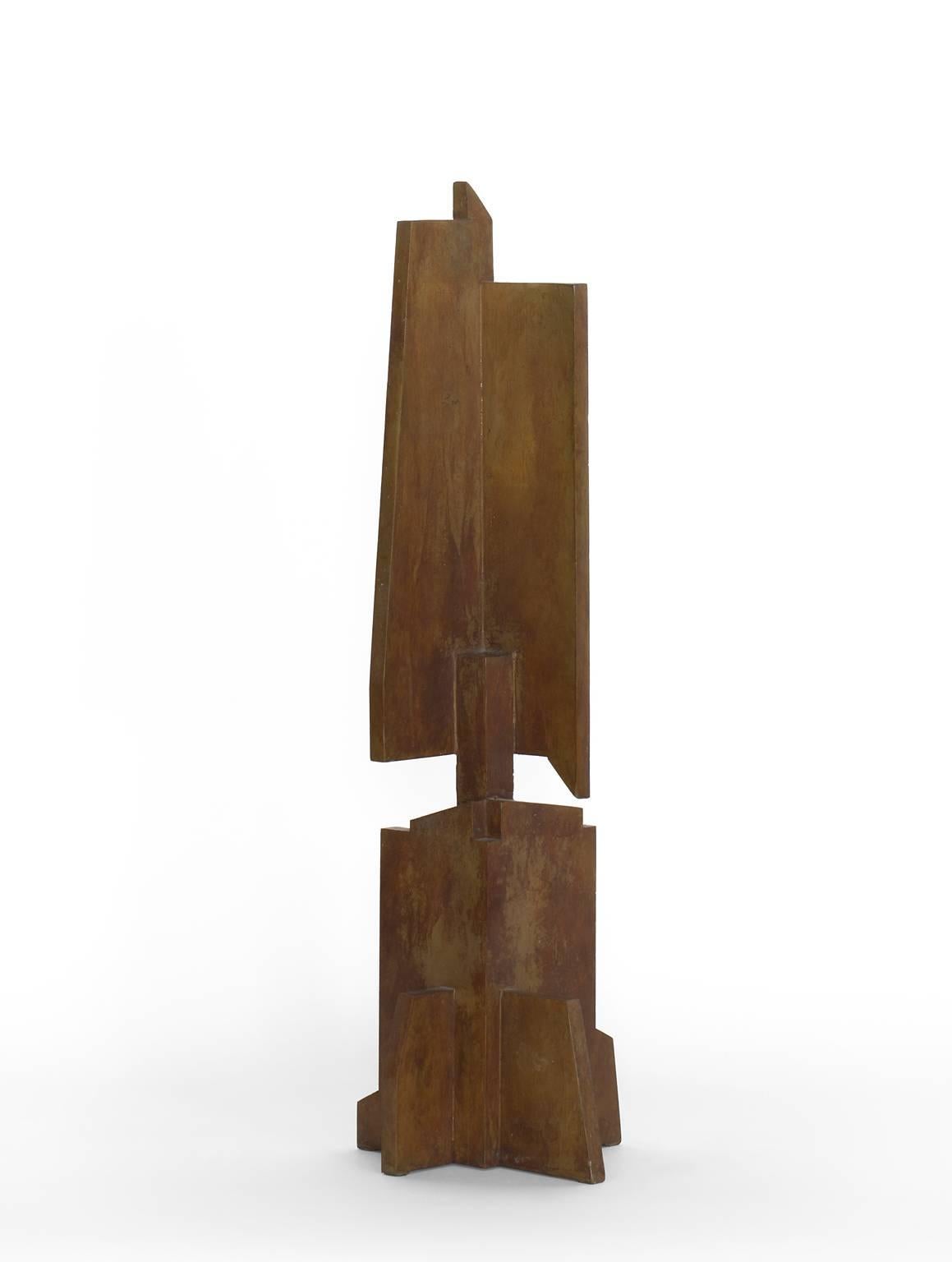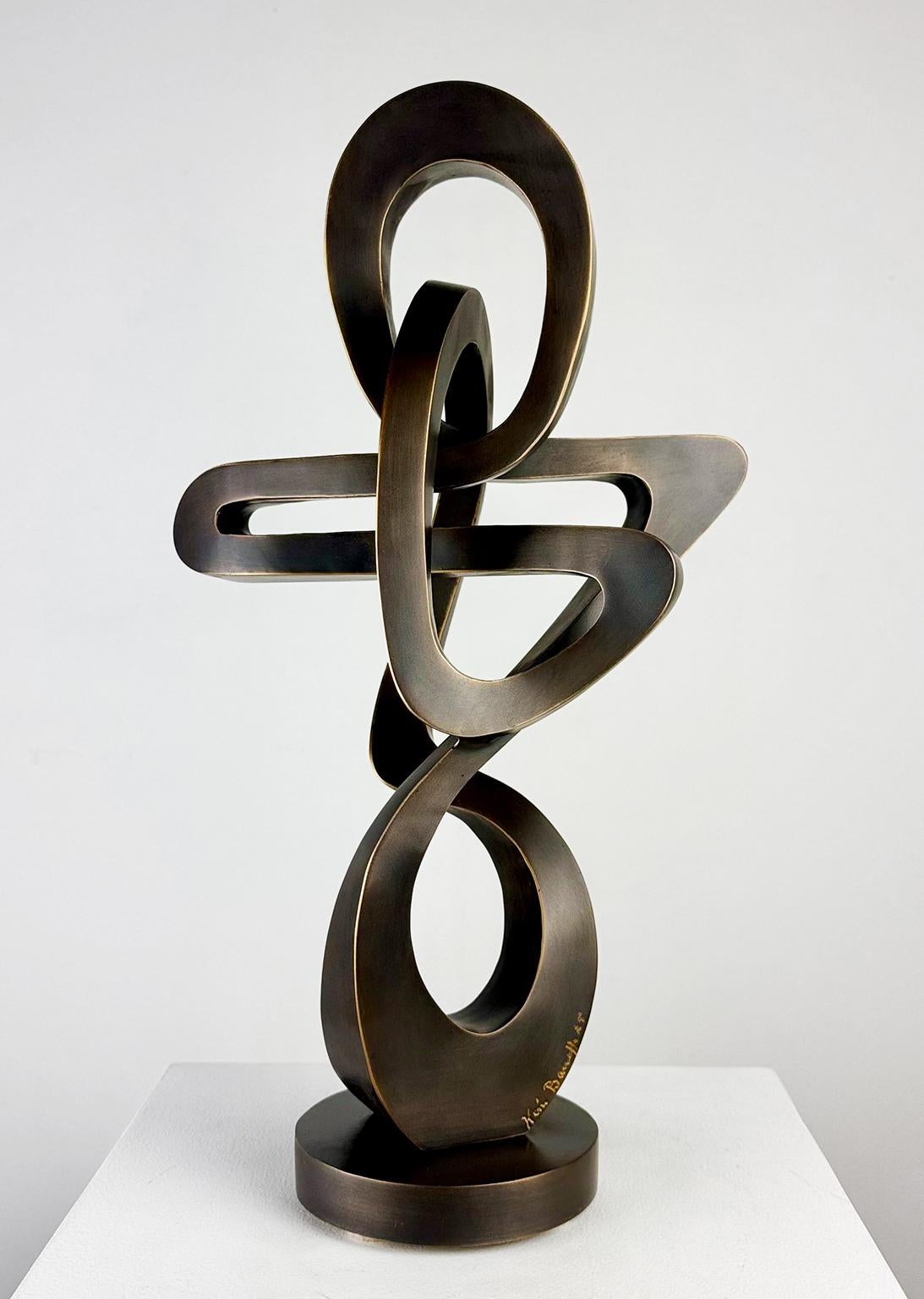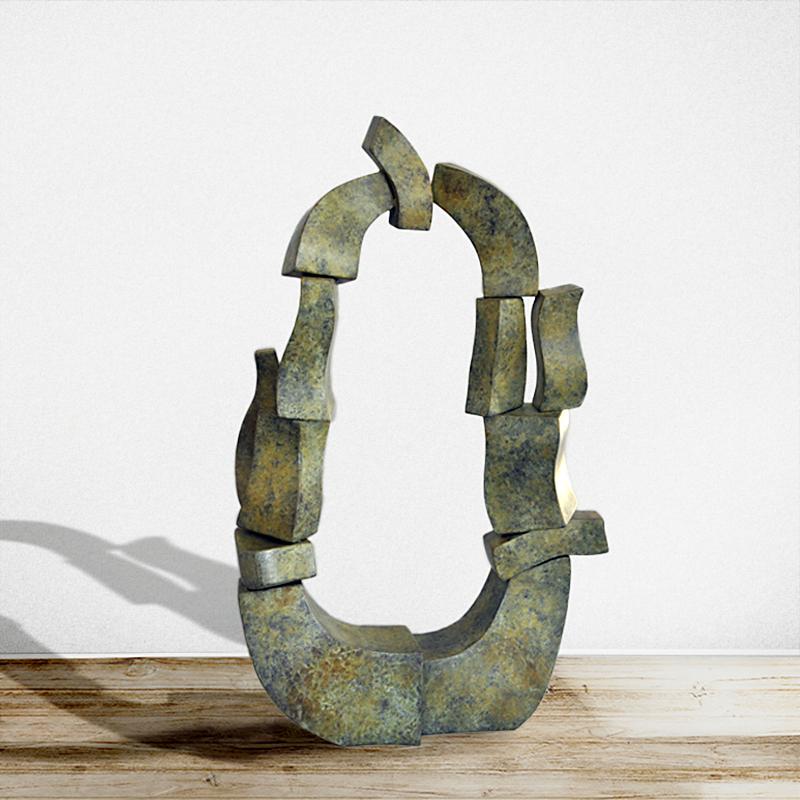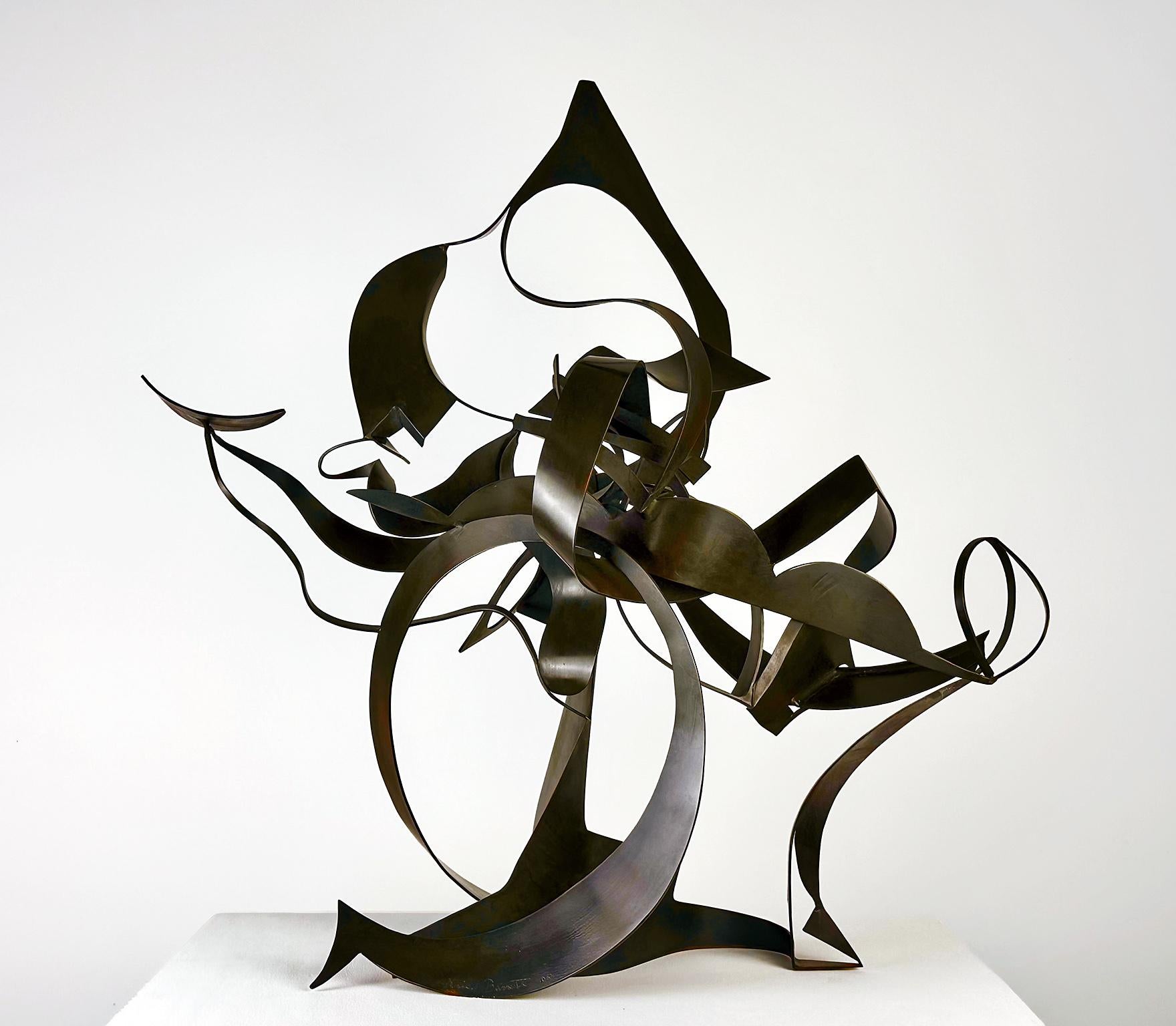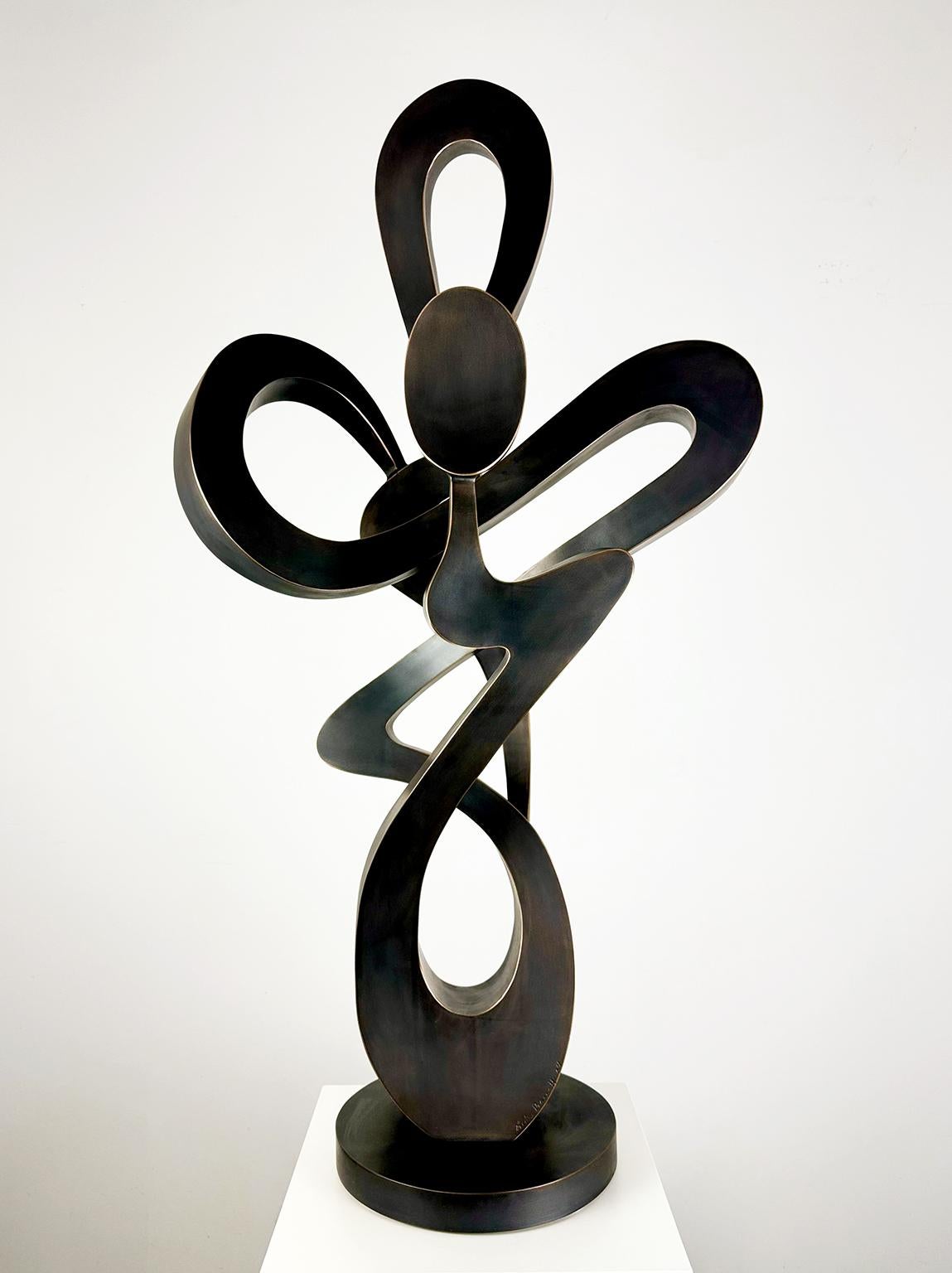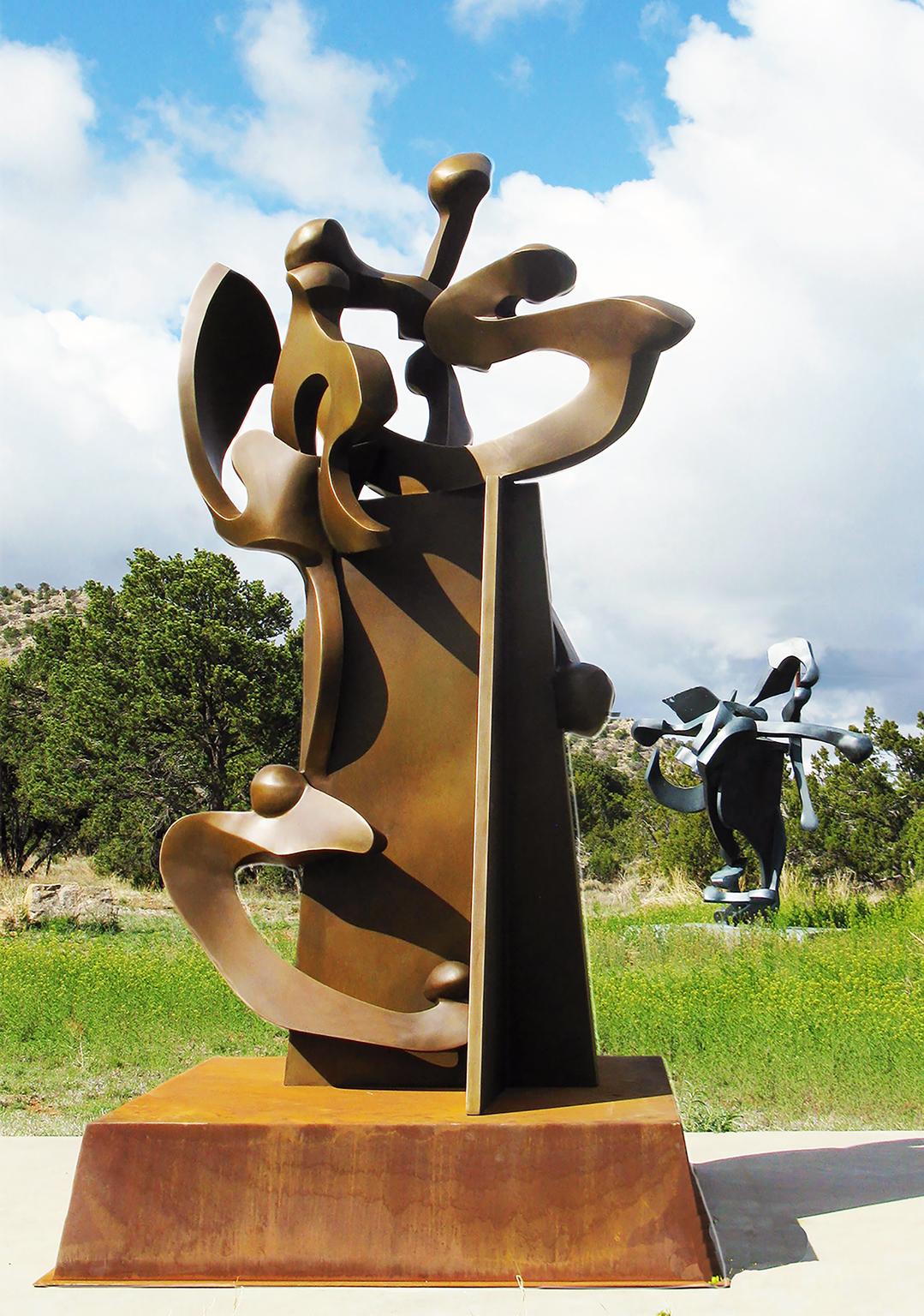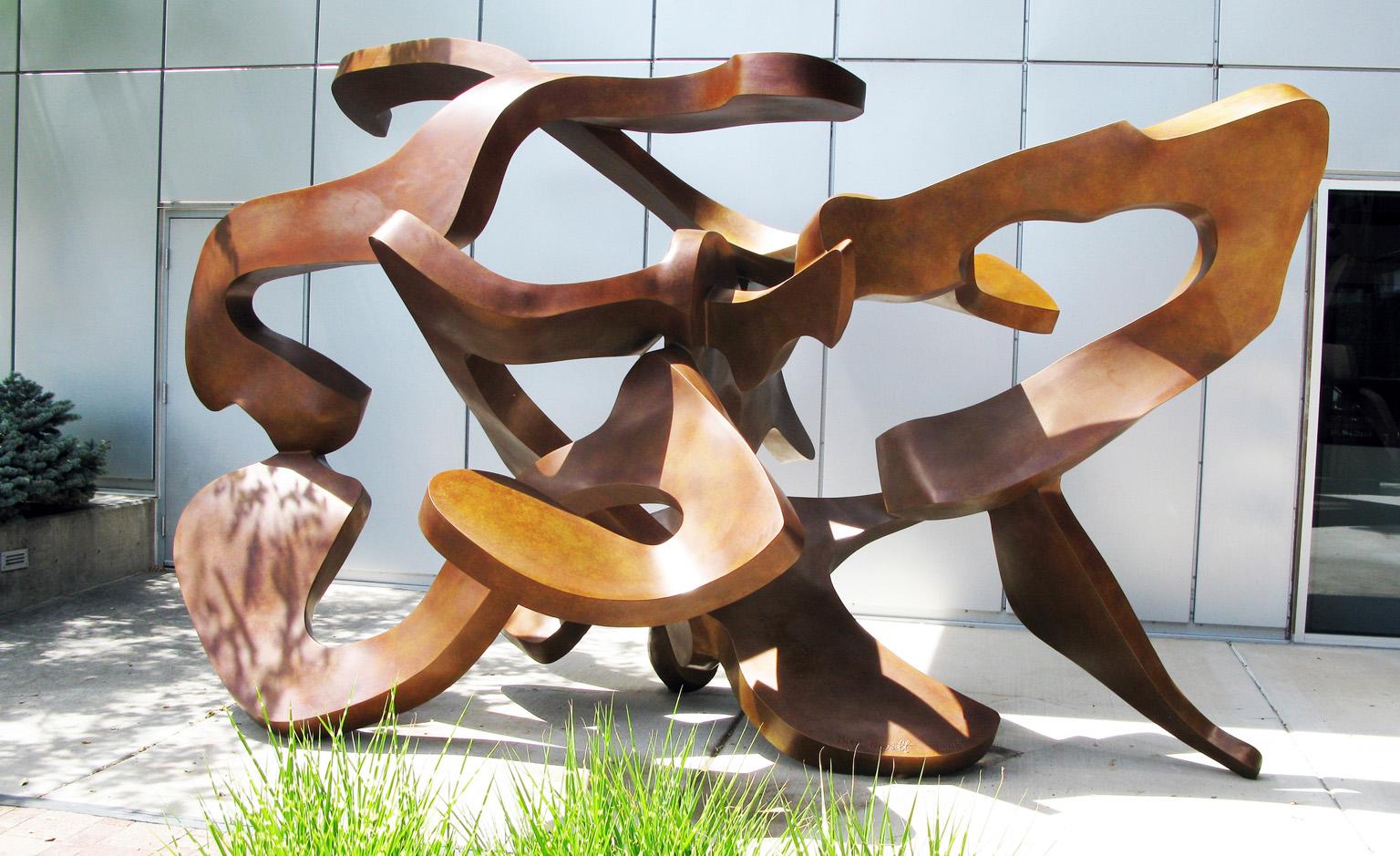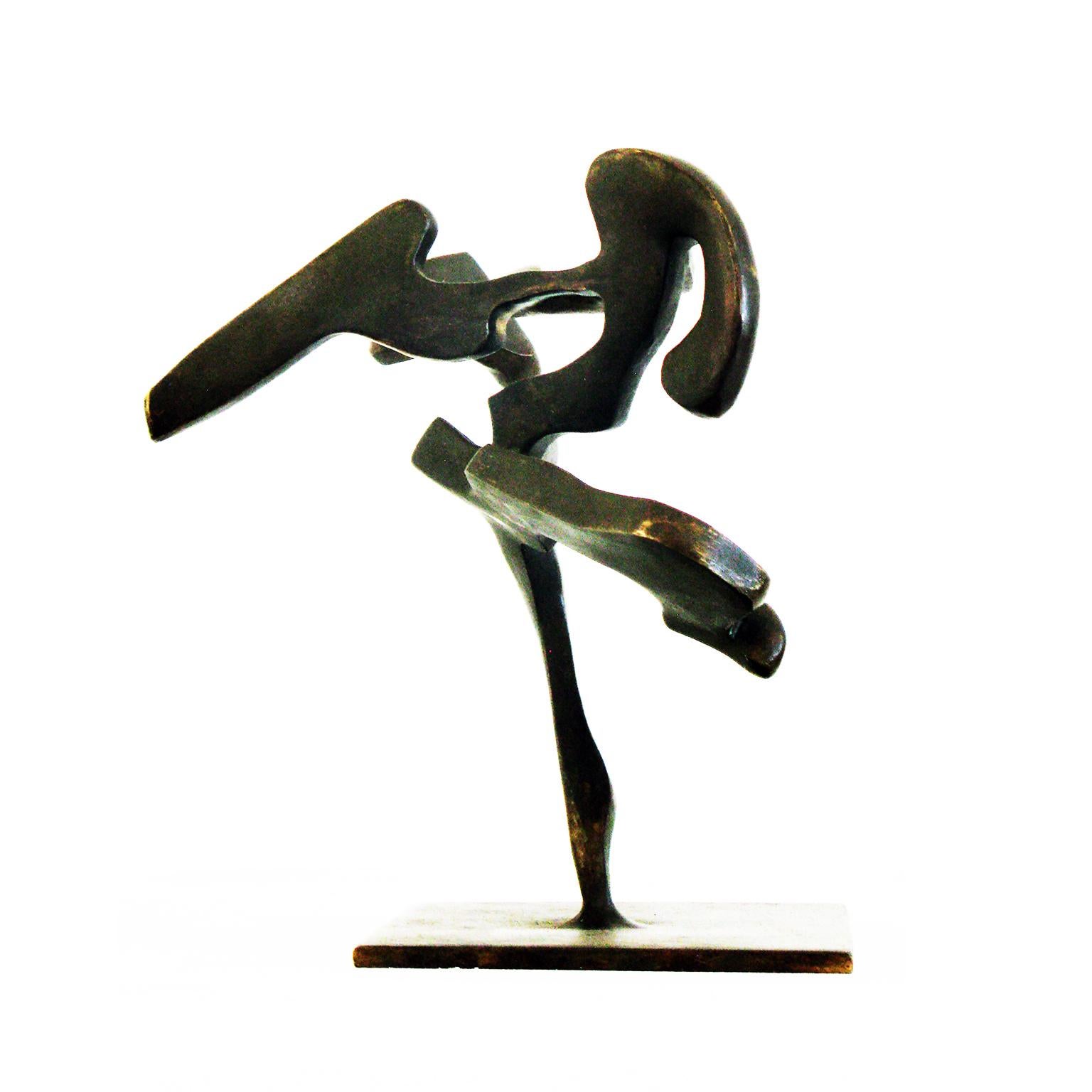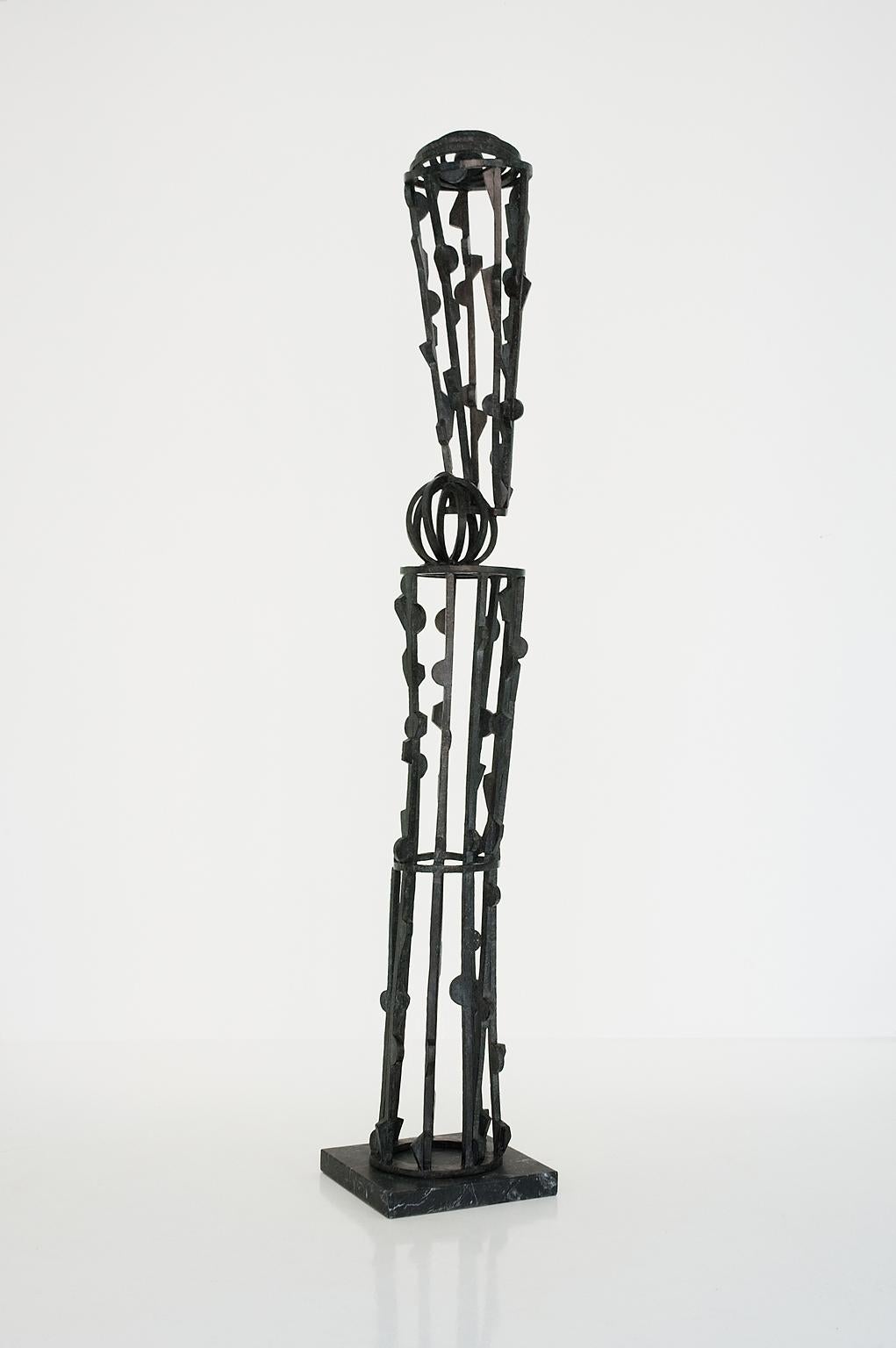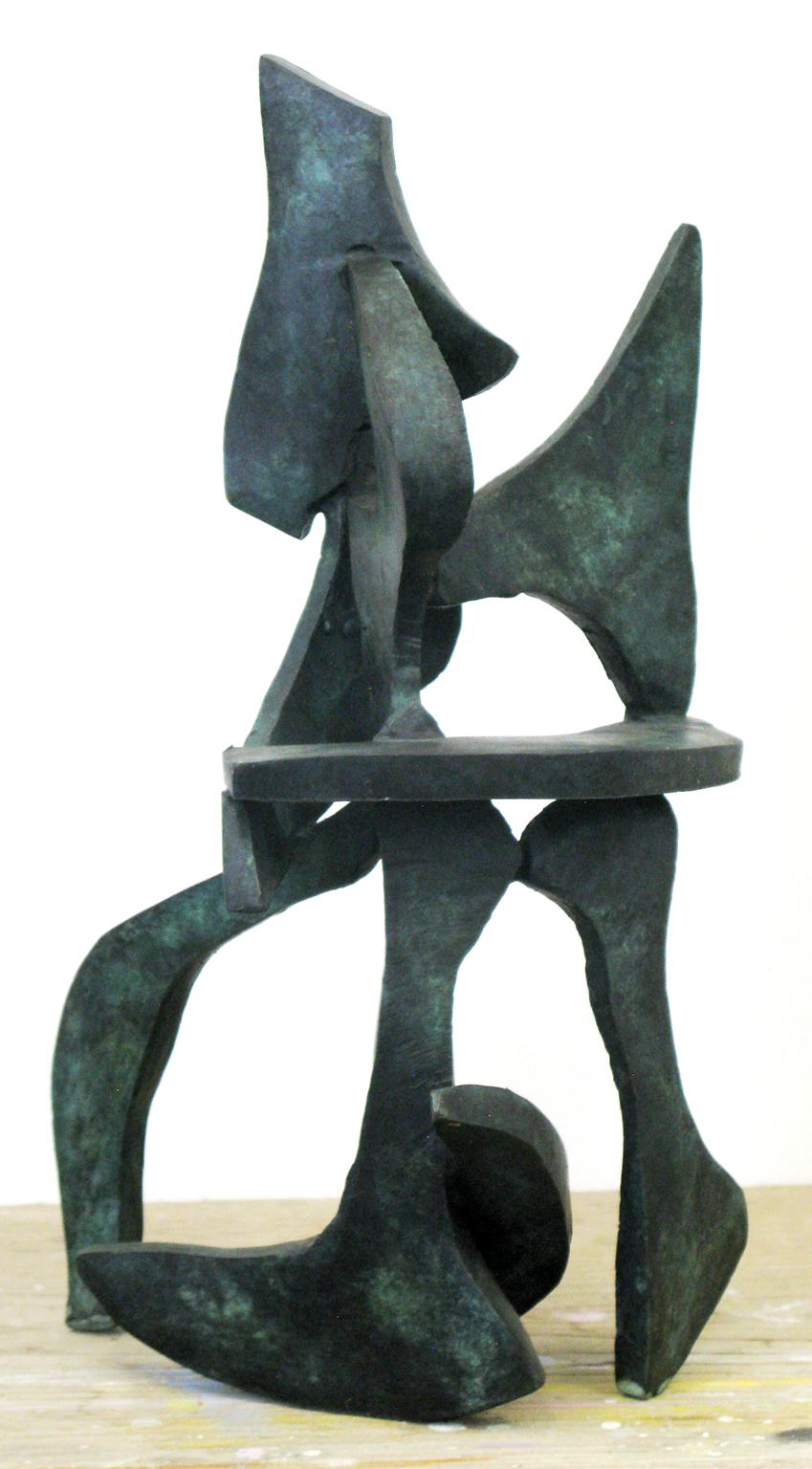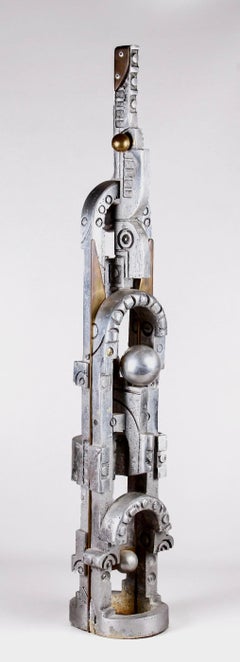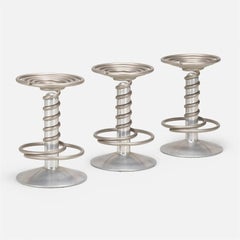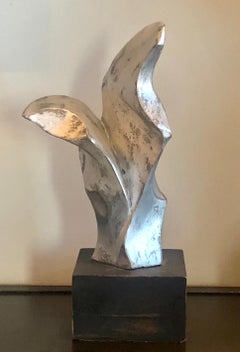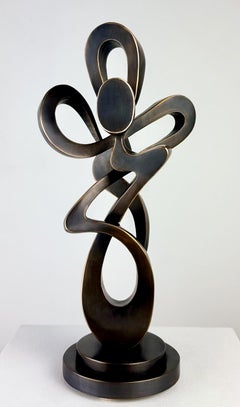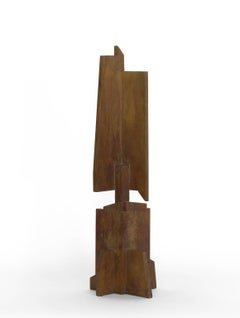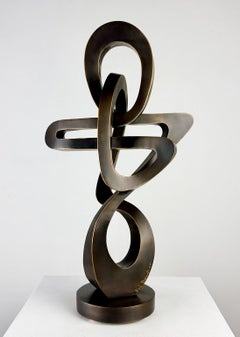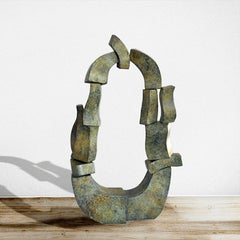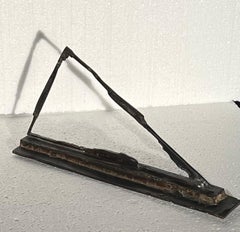
Contemporary Geometric Abstract Sculpture Bronze Unique Italian European 1983
View Similar Items
Video Loading
Want more images or videos?
Request additional images or videos from the seller
1 of 9
Bruno RomedaContemporary Geometric Abstract Sculpture Bronze Unique Italian European 19831983
1983
Price:$4,900
About the Item
- Creator:Bruno Romeda (1933, Italian)
- Creation Year:1983
- Dimensions:Height: 6 in (15.24 cm)Width: 12 in (30.48 cm)Depth: 2 in (5.08 cm)
- Medium:
- Movement & Style:
- Period:
- Condition:
- Gallery Location:New York, NY
- Reference Number:1stDibs: LU1156211464772
About the Seller
5.0
Gold Seller
Premium sellers maintaining a 4.3+ rating and 24-hour response times
Established in 2008
1stDibs seller since 2019
193 sales on 1stDibs
Authenticity Guarantee
In the unlikely event there’s an issue with an item’s authenticity, contact us within 1 year for a full refund. DetailsMoney-Back Guarantee
If your item is not as described, is damaged in transit, or does not arrive, contact us within 7 days for a full refund. Details24-Hour Cancellation
You have a 24-hour grace period in which to reconsider your purchase, with no questions asked.Vetted Professional Sellers
Our world-class sellers must adhere to strict standards for service and quality, maintaining the integrity of our listings.Price-Match Guarantee
If you find that a seller listed the same item for a lower price elsewhere, we’ll match it.Trusted Global Delivery
Our best-in-class carrier network provides specialized shipping options worldwide, including custom delivery.More From This Seller
View AllBrutalist Aluminum Brass Contemporary Totem Sculpture Abstract non objective
Located in New York, NY
Brutalist Aluminum Brass Contemporary Totem Sculpture Abstract non objective
The work has a sensational presence and look great to the ey...
Category
21st Century and Contemporary Abstract Abstract Sculptures
Materials
Metal, Brass
"Couple II" Mid 20th Century Modern Abstract Figurative 1940s European Sculpture
By Jacques Lipchitz
Located in New York, NY
"Couple II" Mid 20th Century Modern Abstract Figurative 1940s European Sculpture
Jacques Lipchitz (1891-1973)
"Couple II"
Bronze
signed on the base
The sculpture was conceived in 19...
Category
1940s Modern Figurative Sculptures
Materials
Bronze
Ron Arad Screw Stools Set of Three Driade Italy Sculpture Industrial Stainless
By Ron Arad
Located in New York, NY
Ron Arad Screw Stools Set of Three Driade Italy Sculpture Industrial Stainless
Ron Arad
Screw stools, set of three
Driade
United Kingdom / Italy, 2006
Stainless steel and aluminum
2...
Category
Early 2000s Contemporary Abstract Sculptures
Materials
Steel
Abstract Sculpture Mid 20th Century Modern Non Objective Biomorphic Plaster WPA
By George L.K. Morris
Located in New York, NY
Modern artist George L.K. Morris created this abstract biomorphic nonobjective plaster sculpture during the WPA era of the 1930s / 40s. Monogrammed.
Though George Lovett Kingsland Morris studied with realist painters John Sloan and Kenneth Hayes Miller at the Art Students League, the influence of their points of view was replaced by that of abstractionists Amedee Ozenfant and Fernand Leger. The paintings of Morris were two-dimensional, hard-edged and brightly colored.
Born in New York City in 1905, Morris became a full-fledged abstractionist and a founder in 1936 of the American Abstract Artists. He edited "The World of Abstract Art, the group's publication, and was their president from 1948-1950.
Morris had graduated from Yale in 1928 and studied at the League until 1930, when he went to Paris to attend the Academie Moderne. A sculptor, writer, art critic and teacher in addition to abstract painter Morris himself later taught at the Art Students League from 1943-1944, as well as St. John's College, Annapolis, Maryland, 1960-1961.
Morris' intrinsic abstract bent was made even clearer by his positive feeling for Hans Arp's sculpture. He and Arp edited the French art magazine, "Plastique." Morris also edited the "Bulletin of the Museum of Modern Art" and "Partisan Review."
He died in 1975 in New York City.
George LK...
Category
1930s American Modern Abstract Sculptures
Materials
Plaster
"Construction 1982" Abstract Wall Sculpture Contemporary Mid 20th Century Modern
By Seymour Fogel
Located in New York, NY
"Construction 1982" Abstract Wall Sculpture Contemporary Mid 20th Century Modern
Painted wood assemblage, 36 x 45 x 4 inches overall. Note the label states 3 foot diameter referring to circular portion. Exhibited, Seymour Fogel Constructions Paintings and Drawing, 1984, typed on Graham Modern label verso
Seymour Fogel was born in New York City on August 24, 1911. He studied at the Art Students League and at the National Academy of Design under George Bridgeman and Leon Kroll. When his formal studies were concluded in the early 1930s he served as an assistant to Diego Rivera who was then at work on his controversial Rockefeller Center mural. It was from Rivera that he learned the art of mural painting.
Fogel was awarded several mural commissions during the 1930s by both the Works Progress Administration (WPA) and the Treasury Section of Fine Arts, among them his earliest murals at the Abraham Lincoln High School in Brooklyn, New York in 1936, a mural in the WPA Building at the 1939-1940 New York World's Fair, a highly controversial mural at the U.S. Post Office in Safford, Arizona (due to his focus on Apache culture) in 1941 and two murals in what was then the Social Security Building in Washington, D.C., also in 1941. Fogel's artistic circle at this time included Phillip Guston, Ben Shahn, Franz Kline, Rockwell Kent and Willem de Kooning.
In 1946 Fogel accepted a teaching position at the University of Texas at Austin and became one of the founding artists of the Texas Modernist Movement. At this time he began to devote himself solely to abstract, non-representational art and executed what many consider to be the very first abstract mural in the State of Texas at the American National Bank in Austin in 1953. He pioneered the use of Ethyl Silicate as a mural medium. Other murals and public works of art done during this time (the late 1940s and 1950s) include the Baptist Student Center at the University of Texas (1949), the Petroleum Club in Houston (1951) and the First Christian Church, also in Houston (1956), whose innovative use of stained glass panels incorporated into the mural won Fogel a Silver Medal from the Architectural League of New York in 1958.
Fogel relocated to the Connecticut-New York area in 1959. He continued the Abstract Expressionism he had begun exploring in Texas, and began experimenting with various texturing media for his paintings, the most enduring of which was sand. In 1966 he was awarded a mural at the U.S. Federal Building in Fort Worth, Texas. The work, entitled "The Challenge of Space", was a milestone in his artistic career and ushered in what has been termed the Transcendental/Atavistic period of his art, a style he pursued up to his death in 1984. Painted and raw wood sculpture...
Category
1980s Assemblage Abstract Sculptures
Materials
Wood
"Abstraction" Mid-20th Century American Abstract 1960s Color Field Modernist
Located in New York, NY
"Abstraction" Mid-20th Century American Abstract 1960s Color Field Modernist
James Daugherty (1887 – 1974)
Abstraction
24 x 20 inches
Estate stamp verso
Oil on panel
Provenance: ...
Category
1960s Abstract Abstract Paintings
Materials
Canvas, Oil
You May Also Like
"Rhapsody" (maquette), Abstract, Bronze Metal Sculpture, Tabletop Size
By Kevin Barrett
Located in New York, NY
"Rhapsody" (maquette) Abstract, Tabletop Size, Metal Sculpture by Kevin Barrett
Bronze
Kevin Barrett is noted for creating unique, rhythmic, abstract indoor and outdoor sculpture an...
Category
2010s Abstract Abstract Sculptures
Materials
Metal, Bronze
"NY Bridge", Richard Heinrich, Abstract Contemporary Bronze Sculpture, Metal
By Richard Heinrich
Located in New York, NY
"NY Bridge Maquette" by Richard Heinrich, 2000
Bronze
Contemporary Abstract Sculpture, Industrial, Modern, Indoor, Outdoor
Category
2010s Abstract Abstract Sculptures
Materials
Bronze
"Slinky" (maquette), Abstract, Bronze Metal Sculpture, Tabletop Size
By Kevin Barrett
Located in New York, NY
"Slinky" (maquette) Abstract, Tabletop Size, Metal Sculpture by Kevin Barrett
Bronze
Kevin Barrett is noted for creating unique, rhythmic, abstract indoor and outdoor sculpture and ...
Category
2010s Abstract Abstract Sculptures
Materials
Metal, Bronze
"Pear Portal" Abstract, Bronze Metal Sculpture, Large-Scale, Outdoors
By Hans Van de Bovenkamp
Located in New York, NY
"Pear Portal" by Hans van de Bovenkamp
Unique welded bronze
Renowned for his monumental sculpture created primarily for open-air public locales, Hans Van de Bovenkamp has been descr...
Category
2010s Abstract Abstract Sculptures
Materials
Metal, Bronze
"Lion's Den" Abstract, Bronze Metal Tabletop Sculpture by Kevin Barrett
By Kevin Barrett
Located in New York, NY
"Lion's Den" Abstract Metal Sculpture by Kevin Barrett
Unique bronze tabletop sculpture
Barrett is noted for creating unique, rhythmic, abstract indoor and outdoor sculpture and wal...
Category
Early 2000s Abstract Abstract Sculptures
Materials
Metal, Bronze
"Rhapsody" by Kevin Barrett, Unique Abstract Metal Sculpture in Bronze
By Kevin Barrett
Located in New York, NY
"Rhapsody" by Kevin Barrett
Bronze indoor/outdoor sculpture
Kevin Barrett is noted for creating unique, rhythmic, abstract indoor and outdoor sculpture and wall reliefs.
Bronze Met...
Category
2010s Abstract Abstract Sculptures
Materials
Metal, Bronze
